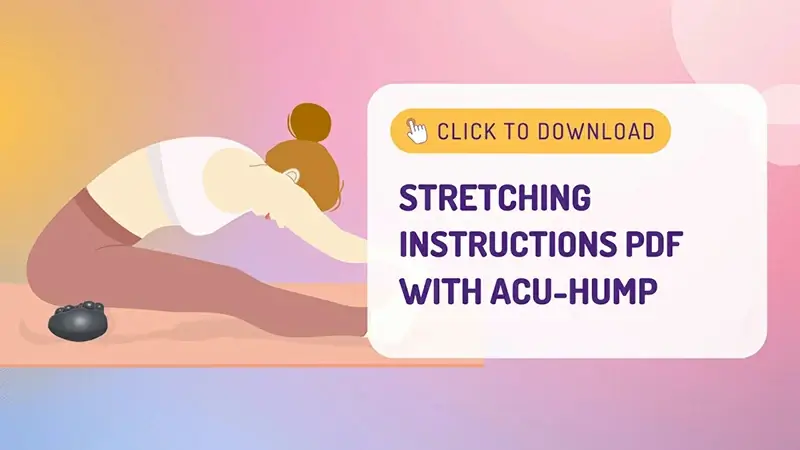What is sciatica
The sciatic nerve, the longest nerve in the human body, starts from the lower back, travels through the buttocks, and extends all the way down the leg. Sciatica is a secondary pain condition, which can be caused by conditions such as herniated discs, spinal stenosis (narrowing of the spinal column), and piriformis syndrome (irritation of the piriformis muscle in the buttocks).
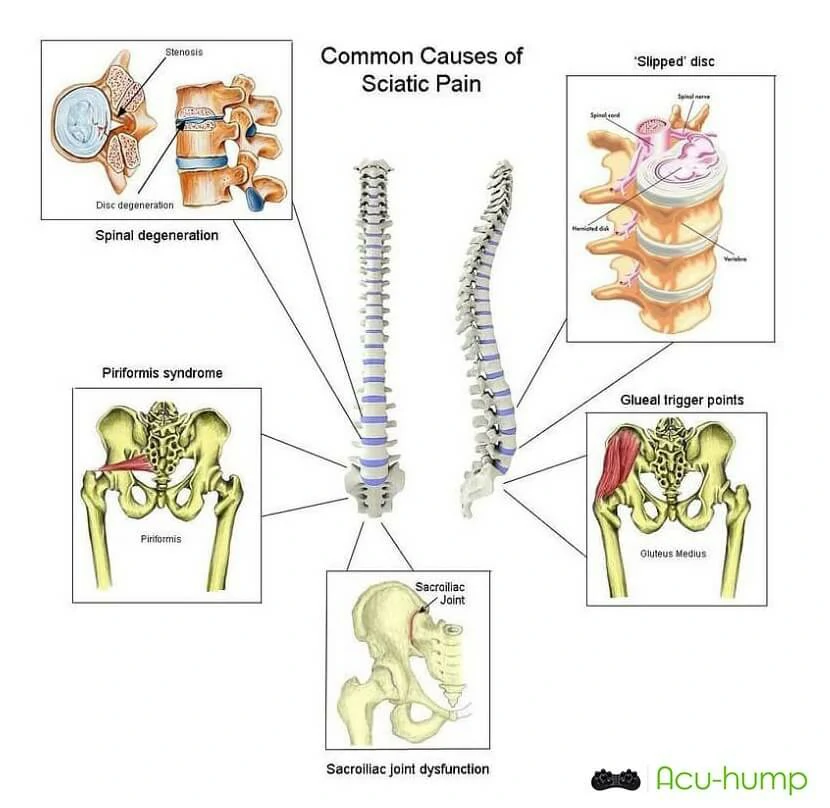
These conditions can compress the sciatic nerve and result in pain. It can significantly impact an our quality of life, causing discomfort, limited mobility, and overall functional decline.
We can combine the natural methods of massage and stretching to prevent and alleviate sciatic nerve pain. Before starting the routine, it is necessary to understand the symptoms and causes of our own sciatic nerve pain. This will allow us to engage in stretching exercises that are more targeted and effective.
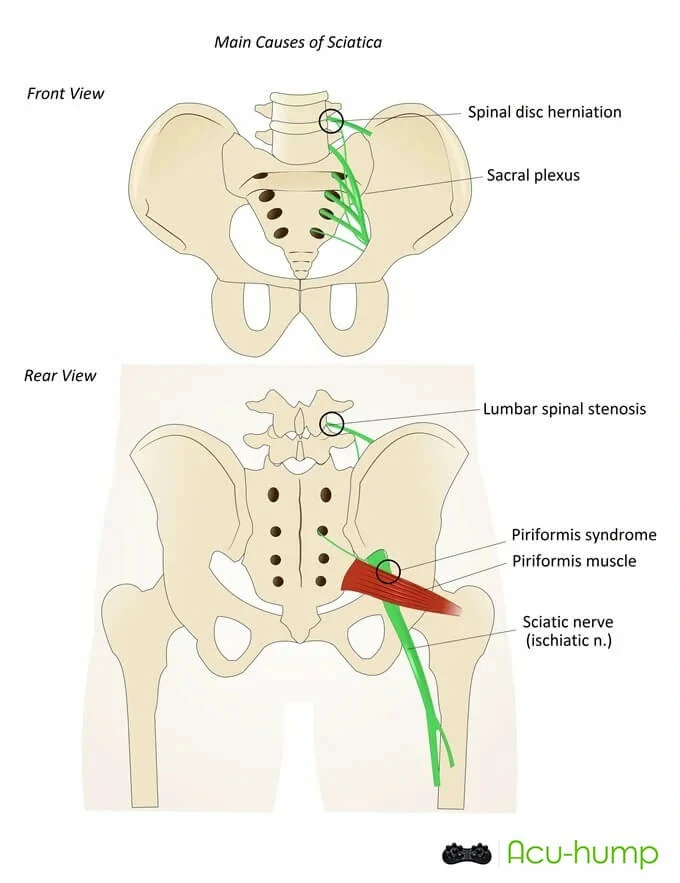
Symptoms of sciatica
The sciatic nerve, the longest nerve in the human body, starts from the lower back, travels through the buttocks, and extends all the way down the leg. We can compare the following symptoms to give myself a preliminary assessment of whether we might be experiencing sciatic nerve pain.
- Lower back pain: Pain can be dull, sharp, or radiating and may worsen with certain movements.
- Hip and buttock pain: Discomfort or aching sensation in the hips and buttocks.
- Leg pain: Pain can range from a mild ache to a sharp, shooting sensation. It typically manifests on one side of the body.
- Numbness and tingling: Individuals may experience numbness, tingling, or a “pins and needles” sensation in the legs or feet.
- Muscle weakness: Weakness or difficulty moving the affected leg or foot may occur, making it challenging to walk or stand.
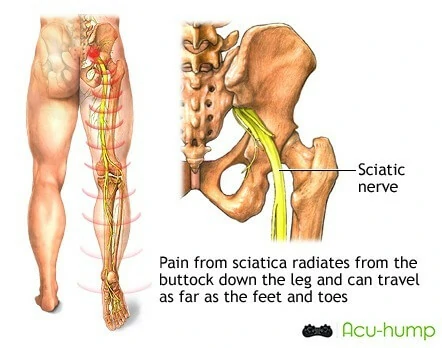
Causes of sciatica
Sciatic nerve pain can be caused by factors such as prolonged sitting, lack of exercise, poor posture, improper lifting techniques, and psychological stress. These factors can weaken and tighten the muscles, leading to discomfort and tension.
So, if you’ve been grappling with sciatic nerve pain caused by these lifestyle factors, give yourself a helping hand (or two!) with some soothing massages and a good stretch. You deserve some serious self-care!

5 factors
- 1. Prolonged Sitting
- 2. Lack of Exercise
- 3. Poor Posture
- 4. Improper Lifting Techniques
- 5. Psychological Factors
Guilty of being a desk potato or sitting for extended periods without breaks? Time to shake things up! Regular breaks, incorporating stretching exercises, and nailing that perfect posture like a pro can alleviate the pressure on the sciatic nerve.
A sedentary lifestyle weakens the muscles that protect our spine and can lead to poor posture. But fear not! Charging into a routine of strength training, cardiovascular activities, and flexibility exercises can keep our muscles strong, maintain proper alignment, and minimize the risk of sciatic nerve woes.
Incorrect posture puts undue stress on our spine and its supporting cast, paving a highway for nerve compression. Time to straighten up! Practicing good posture while sitting or standing helps to prevent that pesky sciatic nerve pain from setting in.
Improper lifting techniques can strain our back muscles and give our spine a hard time, resulting in sciatic nerve pain. Remember, bend those knees, engage those leg muscles, and keep that back straight when lifting.
Stress can sometimes be a real pain in the… nervy business. Those tight muscles and heightened pain perception can team up with stress and tension, making sciatic nerve pain feel worse. Show them who’s boss by managing stress through deep breathing, meditation, or whatever tickles your fancy for mental well-being. Your sciatic nerve will appreciate the relaxed vibes.
Why are massage and stretching helpful?
Massage relaxes muscles, improves blood flow, and relieves tension in the affected area. It also stimulates the release of endorphins, which act as natural painkillers in the body. Stretching exercises, on the other hand, improve flexibility, reduce muscle stiffness, and alleviate pressure on the sciatic nerve.
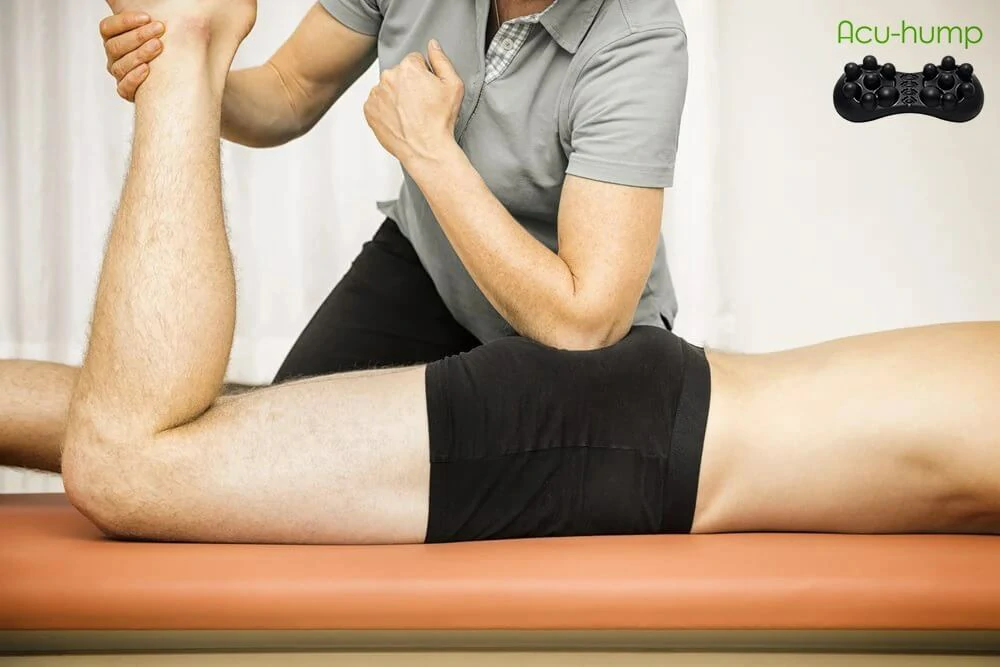
Combining massage and stretching can help strengthen muscles, restoring vitality to weakened muscles caused by factors such as prolonged sitting, lack of exercise, and poor posture. By these, the muscles can better support spine and joint, paving the way for the sciatic nerve.
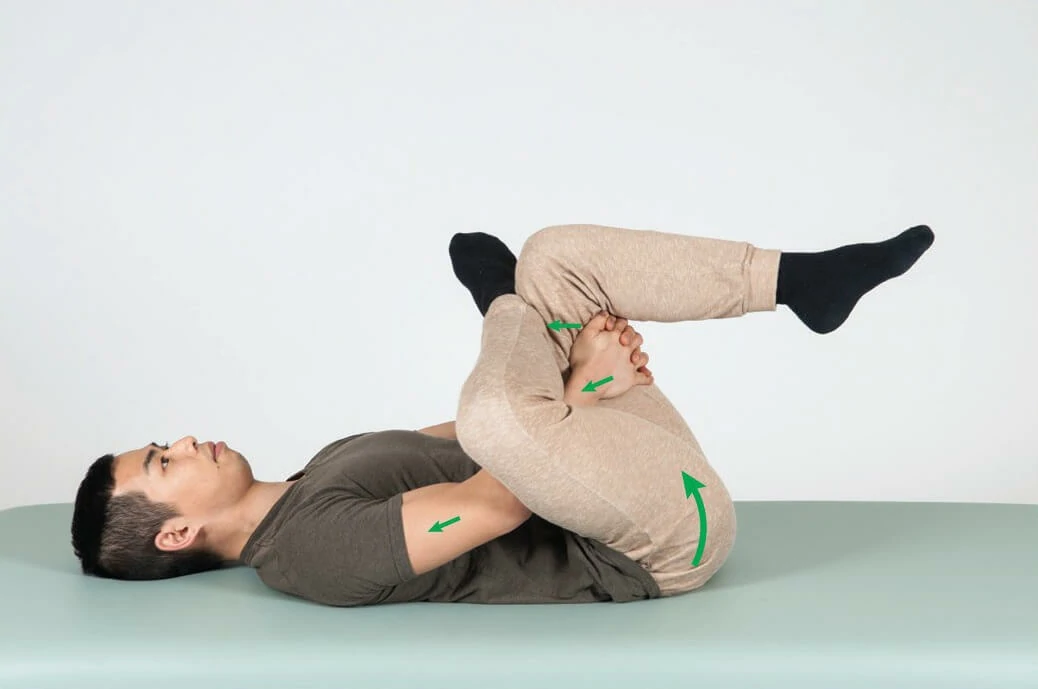
Acu-hump: Combination of deep massage and stretching
We can perform this 10-minute stretching routine once a day, at least 2-3 times a week. In the above routine, the Acu-hump we use is a massage stretcher designed for the areas affected by sciatica.
It assists us in stretching and provides a deep tissue massage. By incorporating the Acu-hump into our stretching routine, we can accelerate the release of tight muscles from the lower back to the buttocks, enhancing the relief of sciatica.
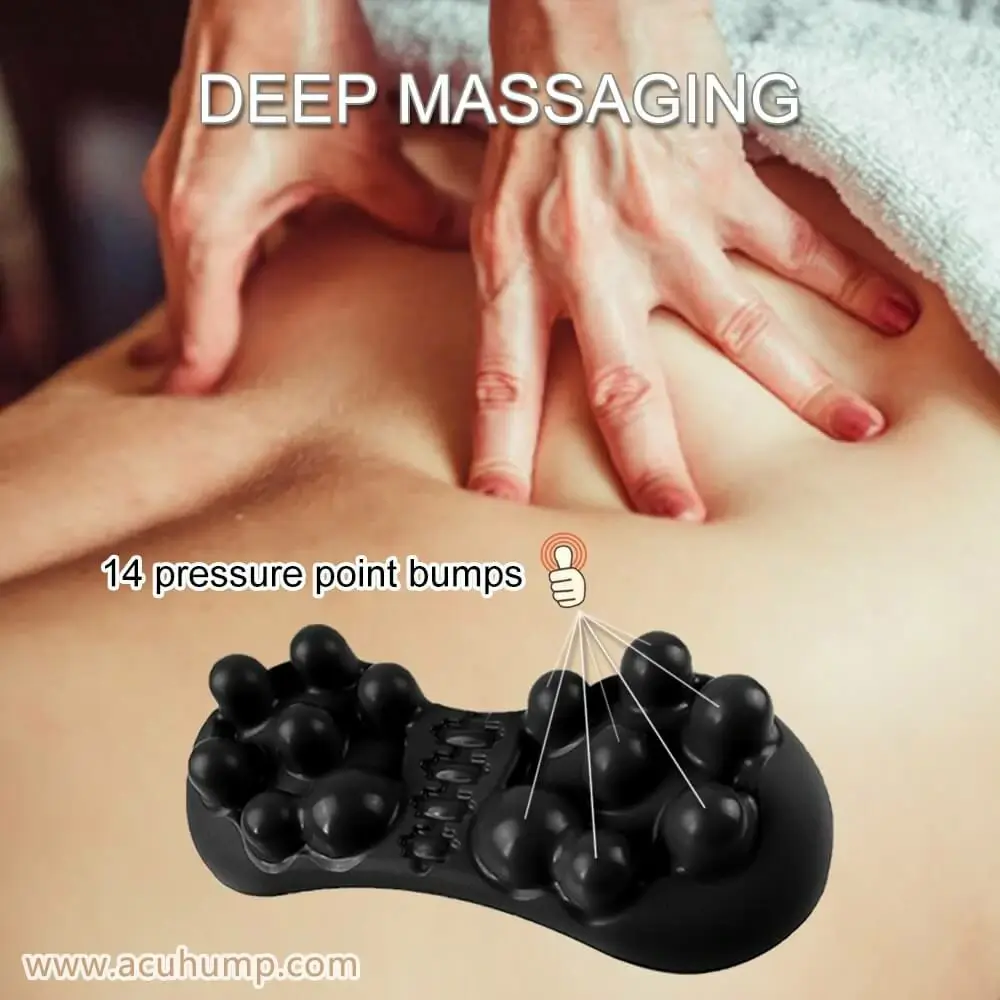
Acu-hump®
Massage Butt & Back
Sciatic nerve pain can be debilitating, but with the right approach, it is possible to find relief naturally. Incorporating massage and stretching into your routine can help prevent and alleviate sciatic nerve pain. Additionally, using tools like the Acu-hump tool for a 10-minute stretching routine can specifically target and alleviate discomfort.
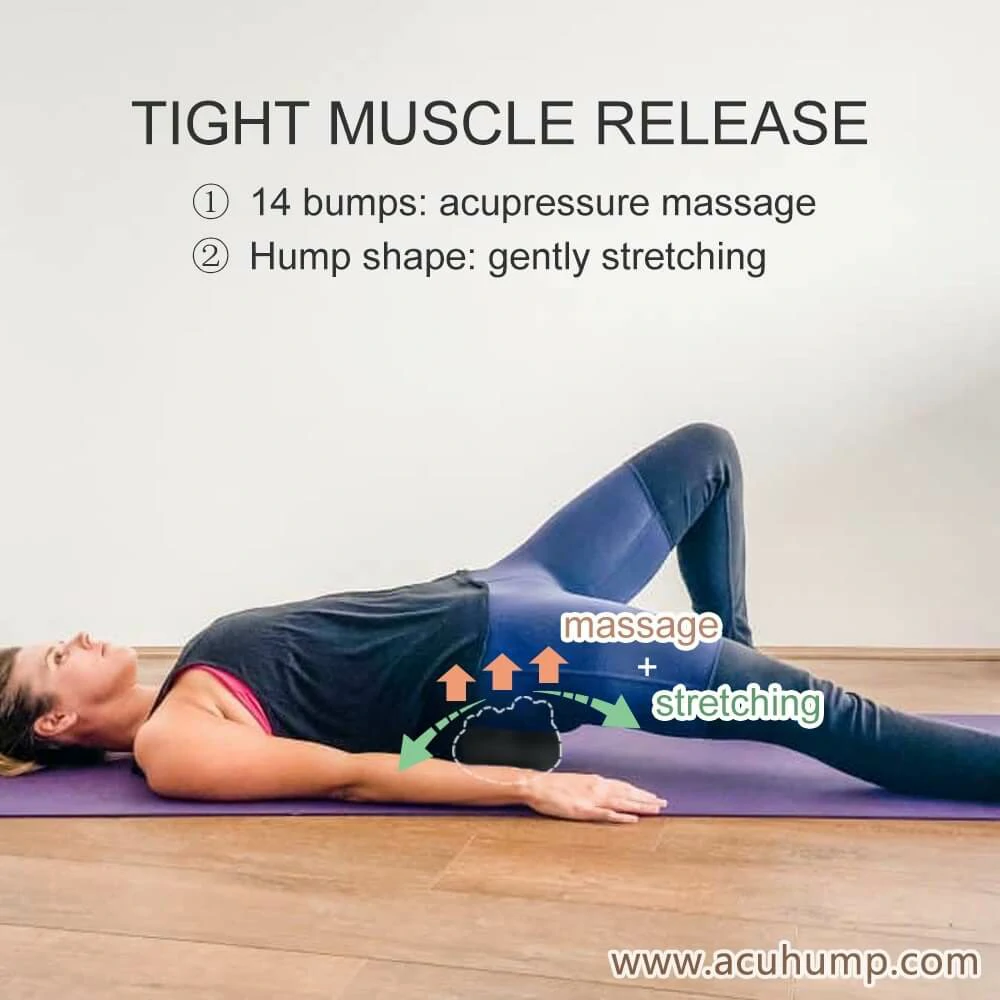
Acu-hump: 30-day return policy. No risk for you.
10-Minute Stretching Routine
Whether our sciatic nerve pain originates from the lower back or buttocks, we can alleviate the discomfort by engaging in this 10-minute exercise routine that targets and relaxes the tense muscles in the lower body. Let’s start.
Minute 1: Warm-up.
Lie flat on the floor and place the Acu-hump tool on our lower back. Maintain the position and allow the body to slowly adapt to the pressure provided by the Acu-hump.

When our lower back muscles are tight, we feel more intense pain. If we are using the Acu-hump for the first time, we can adjust the duration of each posture according to our body’s comfort level.
Minute 2: Lower Back Stretch
Slowly raise both legs, hug the knees towards the chest, and hold for 30 seconds. Lower the legs, rest for 10 seconds, and repeat the exercise once more.
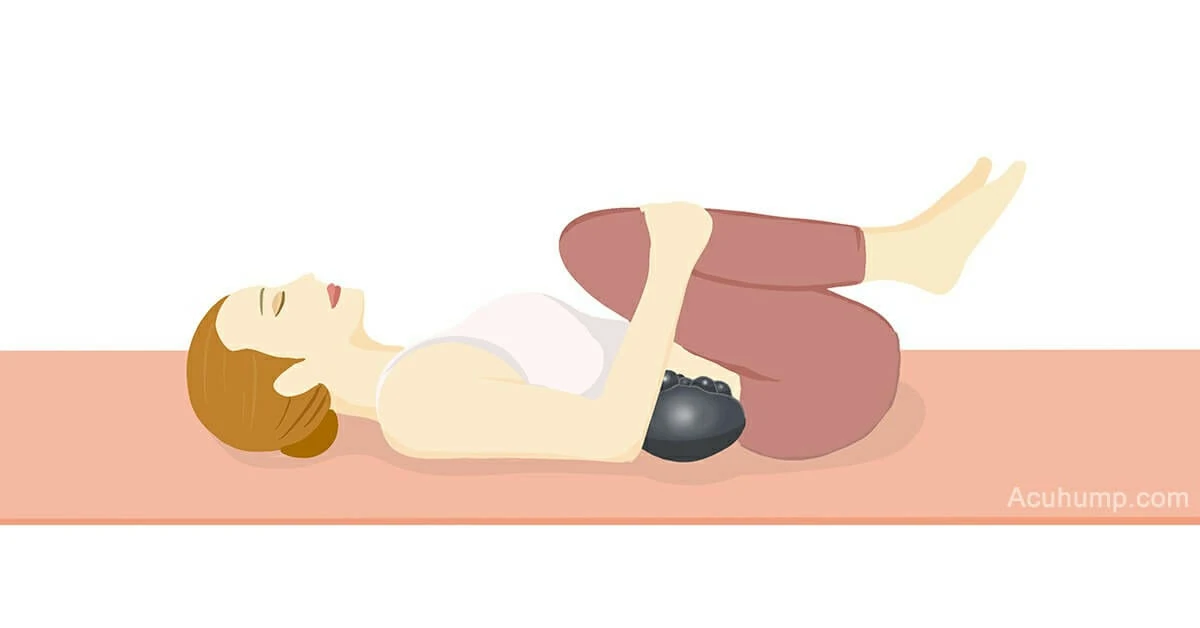
When our sciatica originates from the lower back, we can add an extra 2 minutes to practice this exercise.
Minute 3-4: SI joint Stretch
We start by moving the Acu-hump towards our feet and placing it underneath the SI Joint. Then, bend both legs and keep the left leg still.
Swing the right leg towards the ground, trying to get it as close to the ground as possible, and hold for 15 seconds. Return to the starting position and then switch legs to continue the exercise.
Repeat this for a total of 3 sets, taking approximately 2 minutes.
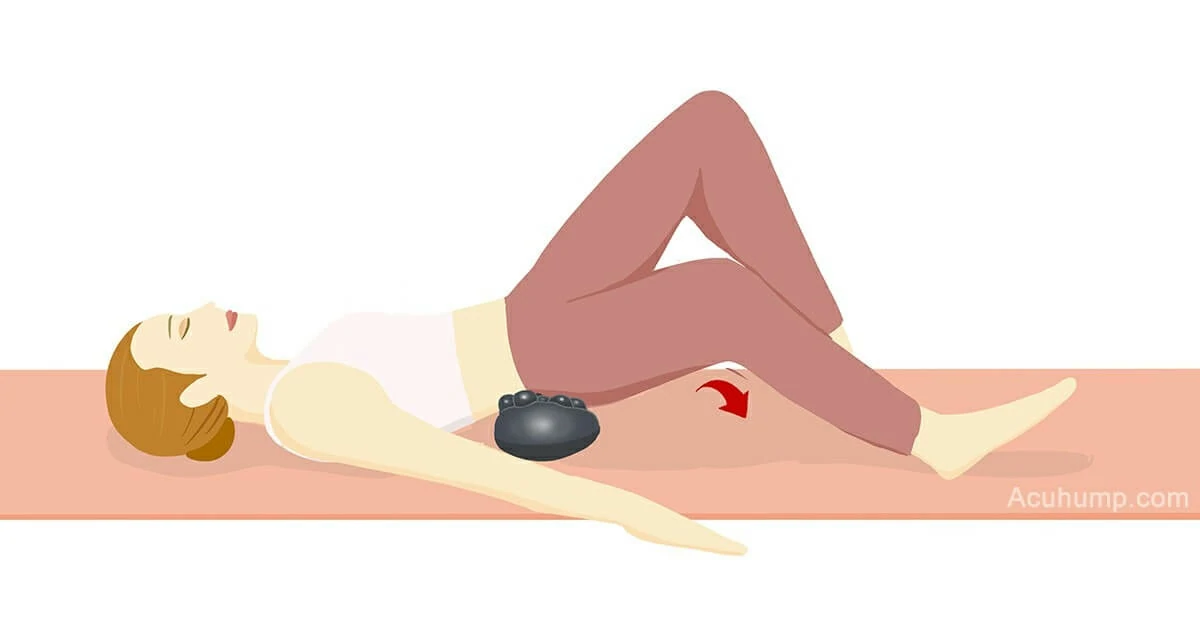
Minute 5-6: Psoas & Hip Flexors Stretch
For targeted stretching and relief, try incorporating Acu-hump into your routine. To optimize its effectiveness, start by adjusting its direction. Position the higher side of the tool near your legs, while the lower side rests against your back. With your knees bent, lie down comfortably.
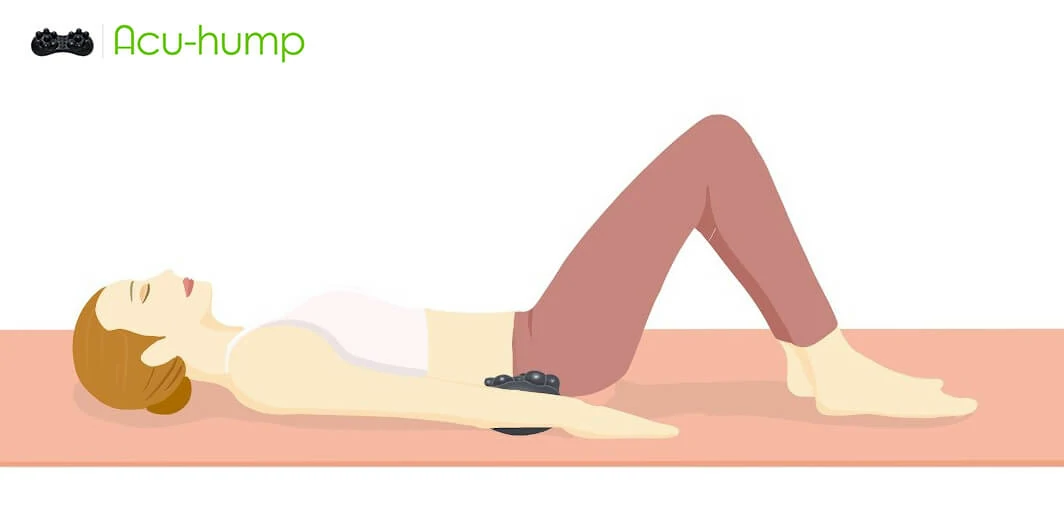
Begin by firmly planting your left foot on the ground and bringing your right knee towards your chest. Maintain a generous angle of approximately 90° with your right leg. Inhale deeply three times, utilizing this position to gently push your right knee away from your body.
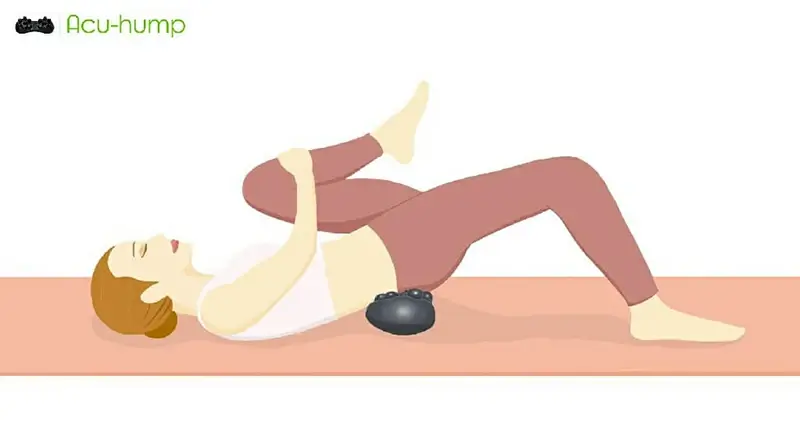
Once you’ve stretched sufficiently, lower your right leg slowly to the ground, ensuring it is fully extended. To further enhance the stretch, delicately apply pressure to your thigh using your right hand.
Repeat the steps outlined above with the opposite leg, providing balanced relief to both sides of your body. Include this targeted stretching technique in your routine for optimal results in alleviating discomfort and improving flexibility.
Minute 7-8: Piriformis & Glute Stretch
Begin by lying on our backs with our knees bent and both feet on the ground.
Place the Acu-hump under our sacrum, ensuring that the high side of the massage stretcher is facing our head. This aligns the Acu-hump with the targeted area and optimizes the effectiveness of the stretch.
With our left foot still firmly on the floor, let’s cross our right ankle over our left knee, forming a figure 4 shape. This position allows for a deeper stretch and helps alleviate pain and tightness in our piriformis.
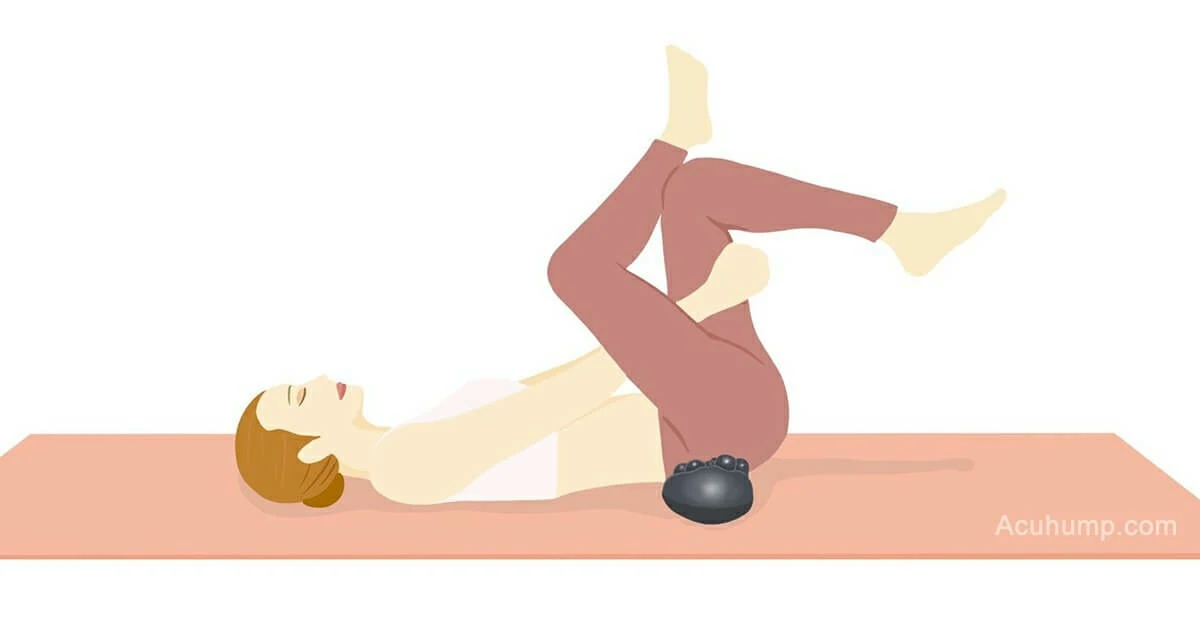
Using our hands, let’s gently pull our left thigh towards our chest while maintaining a bent right knee. This action further stretches the muscles in our hip and lower back, providing relief and improving flexibility. Let’s hold this position for approximately 30 seconds, allowing the muscles to lengthen and relax. Let’s breathe deeply and focus on releasing any tension we may be holding. After the designated time, let’s release the stretch and switch sides.
Minute 9-10: Hamstrings Stretch
Place the Acu-hump under our buttocks. Lie on the ground with our upper body and rest both legs against the wall. Maintain this position for 2 minutes.
Leg root stretching exercises target the muscles from our buttocks to our legs, helping to relax them and alleviate tension on the sciatic nerve. By doing these stretches consistently, we can prevent or alleviate symptoms of conditions like piriformis syndrome or sciatica.
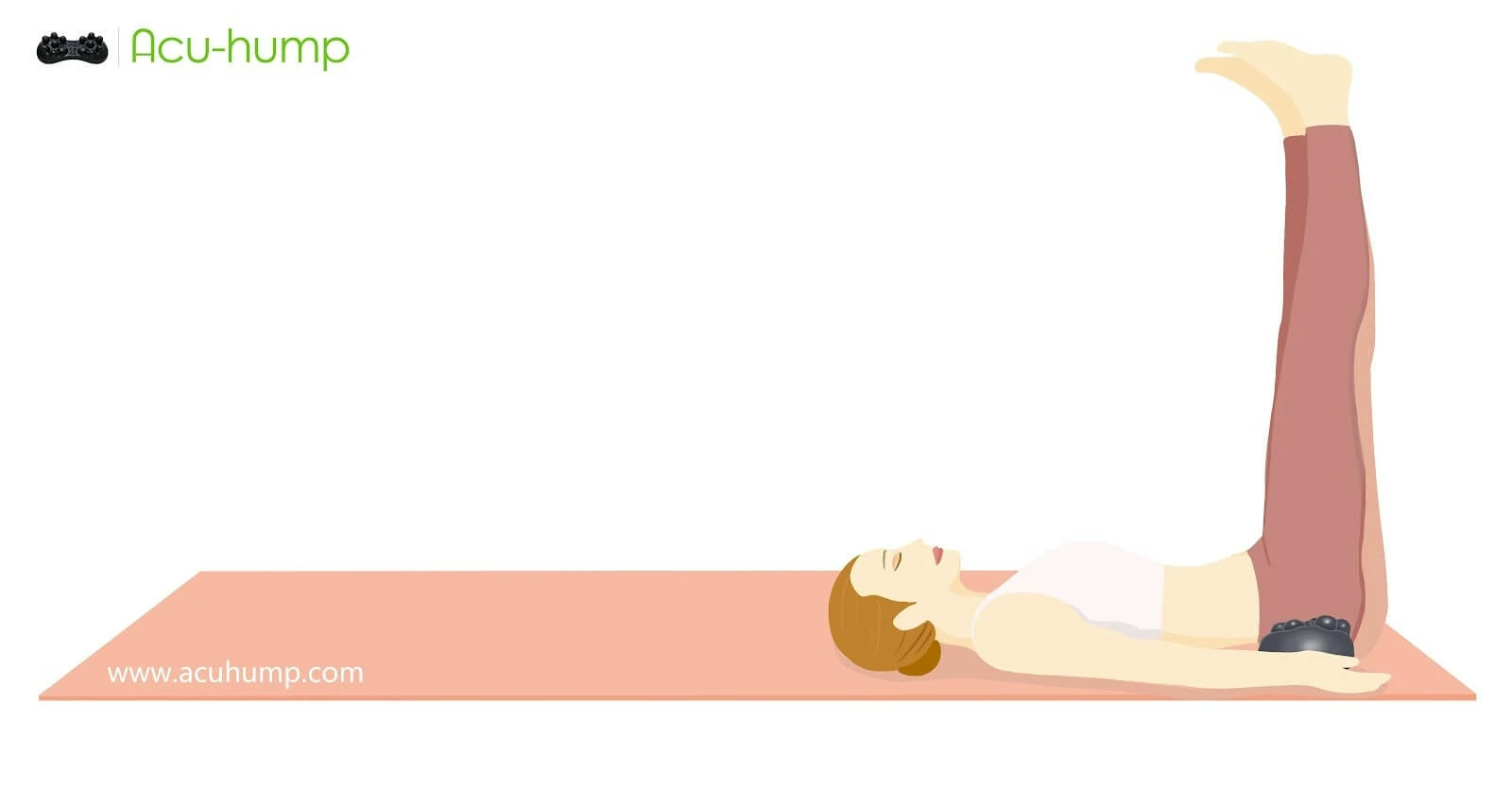
Take action now and join us in following this stretching routine.
Just 10 minutes a day to provide a healthy environment for our sciatic nerve.
Hear What Our Satisfied Customers Say
Read testimonials from multiple customers who found relief with Acu-hump.

OutdoorGuy
I’ve had on/off sciatica and piriformis issues over the years, and general tight hip stuff going on. As an ultrarunner this is already making a big difference in my flexibility around my hips/butt. I mostly use while working at my desk and occasionally move to the floor to stretch my pelvis and lower core.

E. Bredhold
I deal with sciatica and back pain. I’ve used several stretching devices for my back and always wished I could use them on my lower back and hips more. So, this is perfect. The one side with larger “nubs” is a little painful if you’re sore but does work well to work out any knots or trigger points. The other side is gentler and provides a really good stretch for this area. I will continue using it to stretch and relieve tension. I can’t say it’s fixed it, but it certainly will help!
Don’t hesitate, Acu-hump is available for purchase on Amazon with a 30-day return and exchange policy, so you have no risk.
Grab your Acu-hump now and give it a try!

Acu-hump®
Sciatica Relief
However, it is crucial to consult with a healthcare professional if the pain persists or worsens. By exploring natural methods and seeking professional guidance, individuals can take control of their sciatic nerve pain and improve their overall well-being.
Sciatica Stretches PDF
Get Sciatica Stretching Routine PDF and save to your phone
